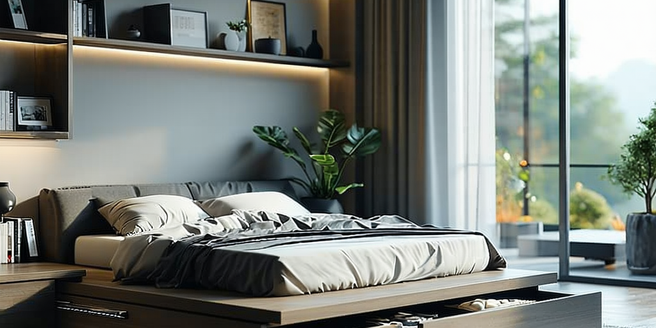Optimizing Space To Lower Rent Costs

Assessing Your Current Space Utilization
Understanding how you use your available space is the first step in optimizing it. Begin by evaluating each room’s functionality and identifying areas where there’s unnecessary clutter or underutilized spaces. Consider if any rooms serve similar purposes or if certain areas can be downsized or repurposed for different needs. By closely examining your current setup, you can make informed decisions on how to rearrange or modify spaces to increase efficiency. Often, small changes like rearranging furniture or reorganizing storage can free up significant space, reducing the square footage required and potentially lowering rent costs. Regularly reassess as your needs evolve to ensure space remains efficiently allocated. Embracing this mindset of space auditing can lead to more savings and a more organized living environment.
Innovative Storage Solutions for Small Spaces
When space is at a premium, creative storage solutions become essential. Utilizing multi-purpose furniture like ottomans with hidden compartments or beds with drawers can significantly maximize available space. Wall-mounted shelves offer vertical storage, freeing floor space and adding decorative elements. Install hooks or pegboards in kitchens and garages to hang items usually stashed in drawers or on countertops. Vacuum-sealed bags minimize the bulk of clothing or bedding, while collapsible or stackable storage bins help keep belongings organized without wasting space. Innovative designs, such as modular shelving or expandable desks, adapt to changing needs. Solutions like these enhance your living area’s functionality, making smaller spaces more manageable and potentially reducing the need to rent larger, more expensive properties.
Multi-Functional Furniture: Style Meets Utility
In small spaces, furniture often needs to serve dual purposes, merging style with practicality. Pieces like sofa beds or expandable dining tables provide seating or dining solutions without permanently occupying too much space. Fold-down desks or wall-mounted tables offer workspaces that disappear when not in use. Modular furniture can be tailored and adjusted according to current needs—perfect for growing families or those with fluctuating space requirements. Investing in high-quality, durable materials extends furniture longevity, preserving your investment longer. Look for items matching aesthetic preferences but prioritize functionality to ensure each piece contributes to maximizing utility while complementing the overall interior design. Multi-functional furniture is not just trendy but necessary for maintaining an adaptable, efficient living environment without sacrificing comfort or style.
Embracing Minimalism: Declutter for Savings
Minimalism encourages simplifying life, focusing on essentials, and discarding non-essentials. Begin by evaluating possessions—if it doesn’t serve a purpose or bring joy, it’s time to let go. Consider digital versions for libraries or music collections, freeing physical space. Quality over quantity is key with clothing; opt for versatile, durable pieces. Although challenging initially, the decluttering process is liberating, revealing how little is genuinely needed. Fewer items mean reduced storage demands, potentially allowing for smaller living spaces and consequently lowering rent costs. Regularly revisiting and maintaining this minimalist approach can prevent the accumulation of items over time. This lifestyle not only offers financial savings but cultivates a clutter-free, peaceful environment, enhancing overall well-being.
Leverage Vertical Space: Think Upwards
In small spaces, thinking vertically can significantly stretch available real estate. Incorporate tall bookcases, cabinets, or shelving units to maximize storage without crowding floor areas. Floating shelves not only offer practical storage solutions but also feature as decorative elements. Install tall mirrors to give an illusion of a larger space. In kitchens, hang pots and pans or utilize the ceiling for storage potential. Murphy beds fold against the wall when not in use, turning bedrooms into versatile areas. Maximize closets with multi-level hanging systems or vertical shoe racks. By fully utilizing your home’s height, you free up floor space, reduce clutter, and maintain openness in living areas. This vertical mindset allows you to adapt smaller spaces efficiently without compromising on utility or style.
Negotiating Rent Reductions Through Downsizing
Downsizing can be a strategic financial move when negotiating lower rent prices. Begin by evaluating current space for underused areas or belongings that can be minimized. Smaller spaces may not only cost less but can also reduce utility bills and maintenance fees. Approach landlords with a clear plan—highlight how consolidating living areas or shifting to a smaller unit benefits both parties, possibly decreasing vacancy rates and ensuring longer lease terms. Utilize negotiations by presenting market comparisons, reinforcing the mutual advantage of reduced rent. Downsizing doesn’t mean sacrificing lifestyle; rather, it entails embracing efficiency and smarter living arrangements. Successfully negotiating a downsize can alleviate financial pressures while fostering a more streamlined, organized living environment that aligns with modern minimalist trends.